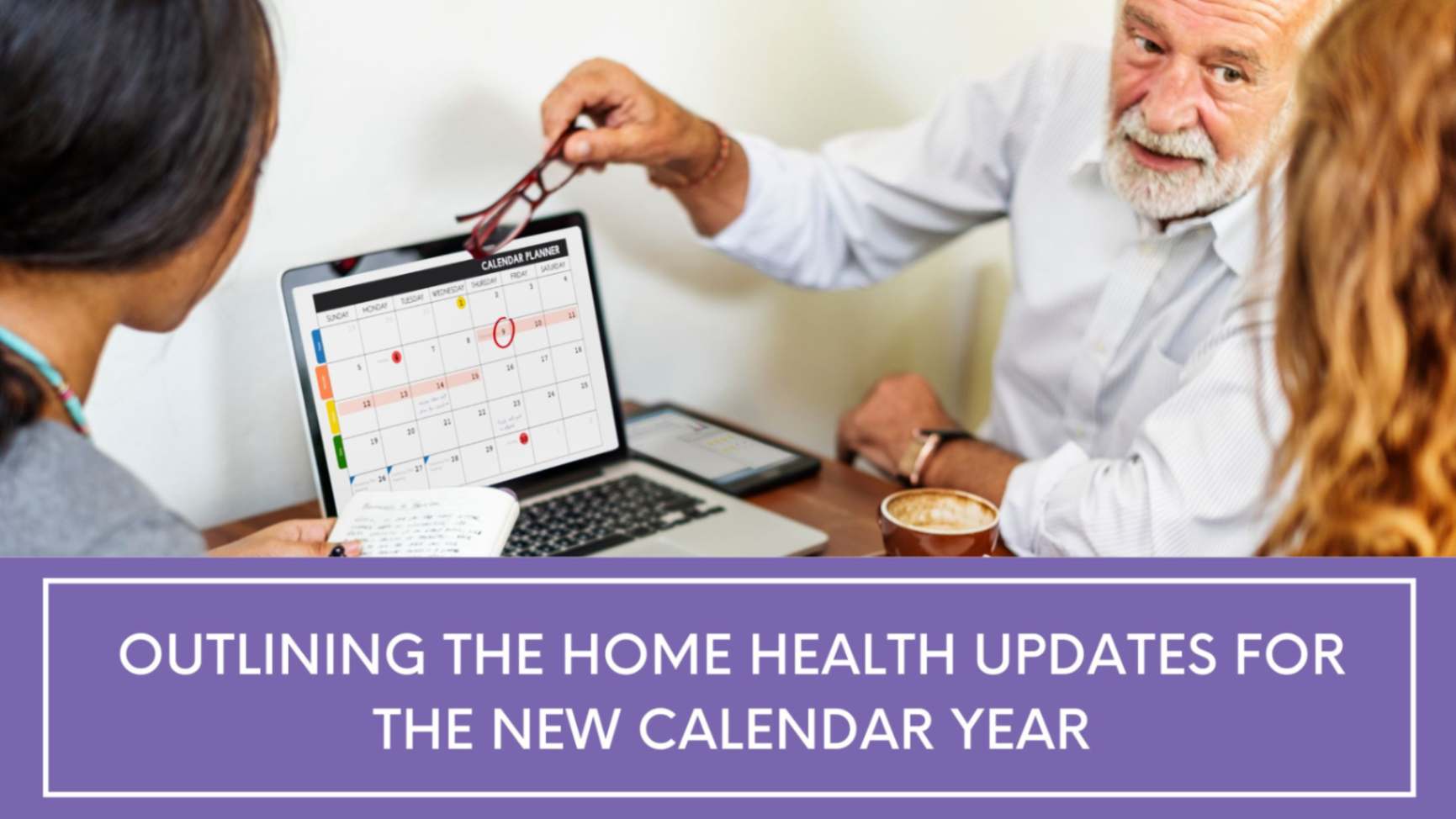Outlining the Home Health Updates for the New Calendar Year
On October 31, 2022, the Centers for Medicare and Medicaid Services (CMS) published the final home health payment regulation for Calendar Year (CY) 2023. Home health agencies (HHAs) that bill Medicare Administrative Contractors (MACs) for the in-home care they give to Medicare patients should refer to these updates.
Here we have listed the essential outlining the Home Health updates for the new calendar year
Table of Contents
Finalized Updates for 2023 CY
Payment Specifics
CMS predicts a 0.7% ($125 million) increase in Medicare payments to home health agencies for the calendar year 2023. This modest rise is due to a permanent behavioral adjustment of -3.925% ($635 million), which is somewhat offset by an update to the market basket of 4.0% ($725 million), as well as the impact of an increase of 0.2% ($35 million) due to the revised Fixed Dollar Loss (FDL). For agencies that produce the necessary high-quality data, CY 2023 will include a national, standardized payout of $2,010.69 every 30 days. This guarantees that total spending stays within the budget.
A fixed 5% cap on negative wage index movements, regardless of the underlying cause for the decline, is finalized by the rule. It is claimed that this will increase the predictability of home health payments.
In addition to updating the functional endpoints and functional impairment thresholds by HIPPS code, CMS also finalized new LUPA criteria. Functional points which are determined by reaction tend to be lower, as in CY 2022. With the elimination of all six visit requirements, the LUPA thresholds will also drop.
The Low Comorbidity Adjustments have increased from 20 categories to 22 subgroups, according to the finalized Comorbidity Adjustment revisions, which are likewise based on CY 2021 data. In the Low Comorbidity table, four new subgroups have been added, while two subgroups have been eliminated. The ultimate increase to 91 interactions was made possible by the High Comorbidity adjustment modifications. To represent the final coding changes, the table modifications are being updated.
Outlier Payments
According to the specifications in Section 1895(b)(5)(A) of the Act, the Fixed Dollar Loss (FDL) ratio and the deficit rate used to determine outlier payments must be chosen in order for the predicted total outlier compensation to stay below the 2.5% aggregate level. For the loss-sharing ratio, 0.80 has been chosen as the value. Medicare covers 80% of the extra projected expenditures beyond the outlier threshold amount including a loss-sharing ratio of 0.80. To ensure that total outlier payments do not exceed 2.5% of the total earnings projected under the HH PPS, the CY 2023 FDL ratio is set at 0.35.
Policies were finalized in the CY 2019 HH PPS final rule with review process (83 FR 56521), to continue the present mechanism for paying high-cost outliers following the adoption of the Patient-Driven Groupings Model (PDGM) starting in CY 2020. Calculations for large cost outliers were based on 30-day care periods.
Highlights of Value-Based Purchasing
Finalized changes to terminologies and definitions related to VBP. The term “baseline year” is replaced with the terms “HHA baseline year” and “Model baseline year” by CMS.
The HHA Baseline Year is the calendar year which would determine the improvement threshold for each measure.
The Model Baseline Year is the calendar year which would determine the benchmark and achievement thresholds for each measure.
With no modifications from the proposed rule, a change for the baseline, performance, and payout years for VBP has been finalized. From all HHA baseline data being beyond the peak of the pandemic, it is anticipated that these revisions will enable all qualifying HHAs, commencing well with CY 2023 performance year, to operate on an even playing field.
Home Health PPS Wage Index
Several factors led to the reduction in the wage index, the CY 2023 HH PPS regulation codifies the implementation of a perpetual 5% cap on any decline in a geographic area’s wage index out of its CY 2023 wage index.
Rural Add-On
Section 4137 of the Consolidated Appropriations Act of 2023 extends the rural add-on policy with 1raise in % the reimbursement amount given for home health care services rendered in the low-density population category in CY 2023. CMS is not updating the CY 2023 impacts file because there was no change to the value of rural add-on for CY 2022 and CY 2023. The total impact for CY 2023 is unchanged.
New G-Codes released by CMS for Telehealth Home Health Services
The Home Health (HH) claim presently doesn’t gather information on telecommunications technology usage at the patient level over the course of a 30-day period of care. The Centers for Medicare & Medicaid Services (CMS) doesn’t really regularly evaluate plans of care to ascertain the extent to which services delivered via a telecommunications system are actually provided, despite the requirement that such services be included in the patient’s plan of care.
- The information we gather on HH claimants’ use of telecommunications technology will enable us to: Examine the traits of patients who use services that are delivered remotely.
- Have a deeper grasp of the social determinants that influence which patient subgroups benefit most from these treatments, including any potential impediments.
You may voluntarily disclose, on HH payment claims submitted on or after January 1, 2023, the application of telecommunications technology within the provision of HH services.
Beginning on July 1, 2023, CMS will need this information for all HH claims.
The following 3 G-codes will be used to submit the HH claim’s utilization of telecommunications technology:
- G0320: Home health services furnished using synchronous telemedicine rendered via a real-time two-way audio and video telecommunications system
- G0321: Home health services furnished using synchronous telemedicine rendered via telephone or other real-time interactive audio-only telecommunications system
- G0322: The collection of physiologic data digitally stored and/or transmitted by the patient to the home health agency (i.e., remote patient monitoring)
The start date of the tracking and the total number of days of the monitoring should be given in the units field when reporting the usage of remote patient surveillance that lasts for several days. You must give line-item-specific information for any telecom services you provide. For each discipline that provides the service, record it as a distinct dated line with the corresponding revenue code. To demonstrate how telecommunications technology aids in achieving the objectives listed on the care plan, you must provide documentation in the medical record.
Only the three G-codes listed above may be reported using Type of Bill 032x. Only the revenue codes 042x, 043x, 044x, 055x, 056x, and 057x should be used to report these codes.
For latest healthcare updates, visit practolytics or reach out to our experts at (803) 932-9624 for more progressive information.
ALSO READ – 2023: New Changes and Updates in ICD-10 CM Codes
Talk to Medical Billing Expert Today — Get a Free Demo Now!






